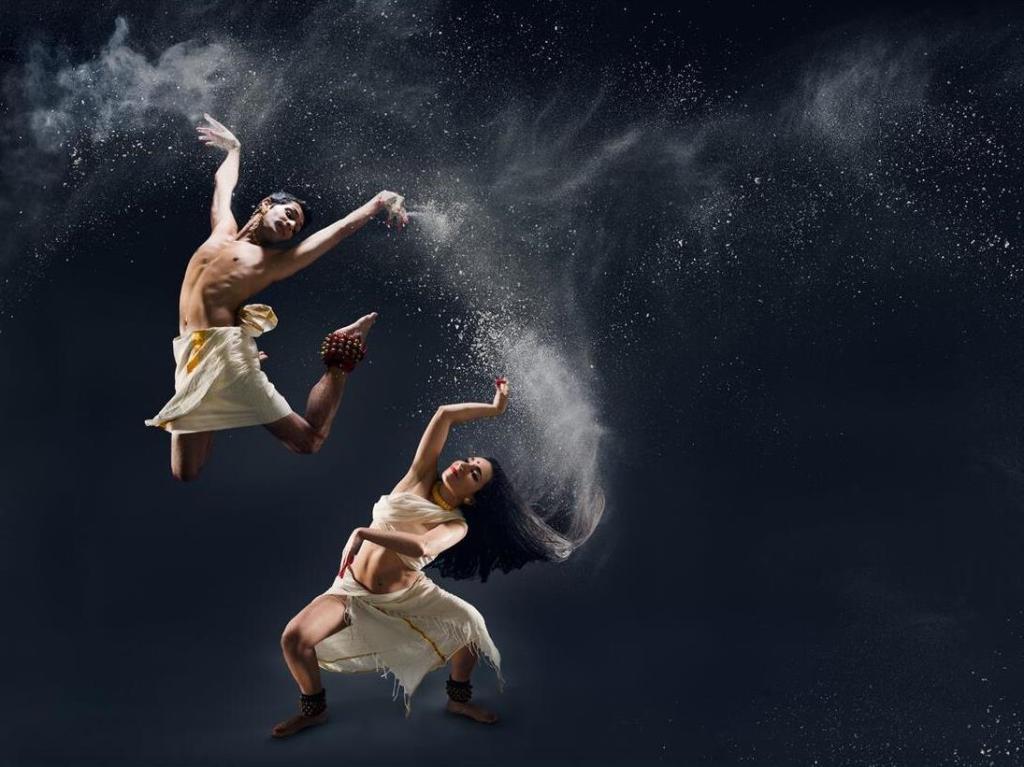Hayden Golder Photography
This dance show was outstanding; it was poetic, sincere and visually extraordinary. The audience sat completely captivated throughout the hour and twenty minutes of the two dancers’ bewitching performance. Footscray Community Arts Centre yet again displays itself to be a mainstay for upcoming contemporary Australian artists.
The dancers Govind Pillai and Raina Peterson, 32 and 31, met four years ago and instantly fell into a working partnership which has blossomed into a breathtaking artistic melding. Peterson is trained in the dancing form Mohiniyattam which originated in Kerala, and Pillai is trained in Bharatanantyam. They are a divine pairing brought together by a shared passion for exploring how the classical Indian dancing tradition (in which they are both fluent) can undergo a contemporary revision.
Govind frames the work as “an exploration into a non-theatre tradition [in which] the beauty and technical rigour of classical Indian dance is found in a work which is contemporary, innovative and riotous”.
In a cleared space, with only flowers and two drinking containers on stage, the two performers appeared lit golden in a pool of red and blue light. Five traditional musicians accompanied the two dancers. The distinctive percussive singing of the karnatik style by Kersherka Sahathevan, filled the auditorium, for one section. Other times long traditional poems were sung by the dancers themselves. The dancers showed all the lightness and grace of marionettes combined with the grounded, wide-legged, low squatting pose of an Indian earth goddess.
Expressive Indian violin was played by Anita Das. Peterson’s sister, Kav P, provided an extraordinary display of solo drumming on the Japanese taiko, waking up the audience with its vigorous fast attacking sound. Her playing has been described as aggressive, but it is also forcefully controlled and precise.
Her sister’s strength in her dancing and Kav P’s drum combined to see a rare tableau of woman as a force of power, of loudness and of unashamed presence. In contrast Pillai’s grace and delicacy as a dancer left an interesting play around gender and the vocabulary movement usually seen in contemporary dance. At one point Pillai walks up over Peterson’s standing legs and over her shoulders, she does not flinch and there is no sign of collapse.
The final moments of the show sees Peterson letting down her long hair; an ancient image of the woman collecting water is suddenly upon us. The rice flour “Kolam” drawing is in disarray as Pillai sits collapsed in the centre of it.The two dancers have been through a conflict. The ending of the show is seventy percent improvised the performers told me; the two dancers watch each other and wait for the ending to emerge through an intuitive knowledge of each other. The piece finished with a quiet gesture as Peterson pours the water into Pillai’s water container, it was a deliciously understated ending.
The piece had several energetic shifts; seamlessly integrated duets were intersected with powerful solo pieces. Informed by yoga positions and classical music often the dancers would halt, like a pause between breaths, to suddenly resemble a tableau from a temple relief or an Indian miniature painting.
The intent of the artists is to “strip back” the classical tradition; to scrape away the excrescences of jewellery, excessive make-up and ornate costume which they comment are the inventions of recent affluent times anyway, not of the original practices. The couple want to return Indian dance back to what they view it originally was: an expression of deep spiritual belief and playful personal input.
In his FCAC interview he writes: “Our roots are deeply planted in a rich classical Indian dance tradition…We love standing in that soil, it’s where we belong. But from here we sprout new leaves as we experiment with learnings from other cultures, more modern times and out own life stories”.
Safe in their hands, Pillai and Peterson do not react to the And just as Pillai and Peterson hoped, the piece is profoundly moving. It was an appetising feast of the music and dance from Southern India but also it was an exciting show that heralds a new breadth of artistic vision by these two Melbourne-based Indian dancers. Like Indian contemporary dancer Akram Khan in the UK, they raise questions about cultural assimilation, about spiritual belief and about gender. But unlike most others, their dance provides confident answers in their devised work.
These are dancers who allow their audience to witness their own take on Indian spirituality without parody or over-seriousness. Rather than be weighed down with the myths and practices of 3000 years of Hindu practice, Pillai and Peterson rise up dancing to communicate the original play of light and joy that is at India’s heart.
Rating: 5 out of 5 stars
In Plain Sanskrit
Govind Pillai and Raina Peterson
Footscray Community Arts Centre
17- 19 July, 2015





